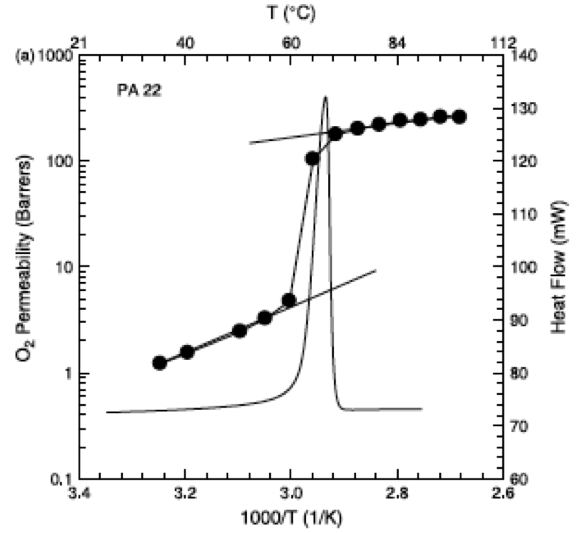Material Design
The material for OPT must have several properties which have been described before.- Photoswitchable permeability
- This photoswitch is reversible.
- The photochromic group has to work at 193 nm.
Paul's group in UT CHE reported that the long alkyl side chain polymers have melting points which are from the side chain crystal. Above the melting point, the O2 permeability of the polymer is significant compared to that below the melting point.

O'leary, UT Dissertation
This showed a big change of the permeability of the material through melting. However, it is not photoswitchable, meaning that we cannot photochemically switch where the permeability starts to bump up. There will be a chance for us to do that only if a photoresponsive group is introduced to the polymer system. Additionally, the photoresponsive group must be photochromic in order to have a reversible photoswitch.
Azo group is a well-known photochromic group. It can isomerize upon UV exposure, which is shown below. The more stable trans- form becomes the cis- form and reverses back upon time, depending on the temperature. The size of the cis- form is bigger than that of the trans- form. If the long alkyl side chain polymer containing azo groups of the trans- form is exposed, the azo chromophores will expend upon exposure, disrupt the side chain crystalline region and therefore lower the melting point of the polymer.

Although azo group is not working at 193 nm, it can be used to prove the concept of optical threshold layer. And we are looking for the right photochromic group which works at 193 nm.
Continue Reading >> Experimental